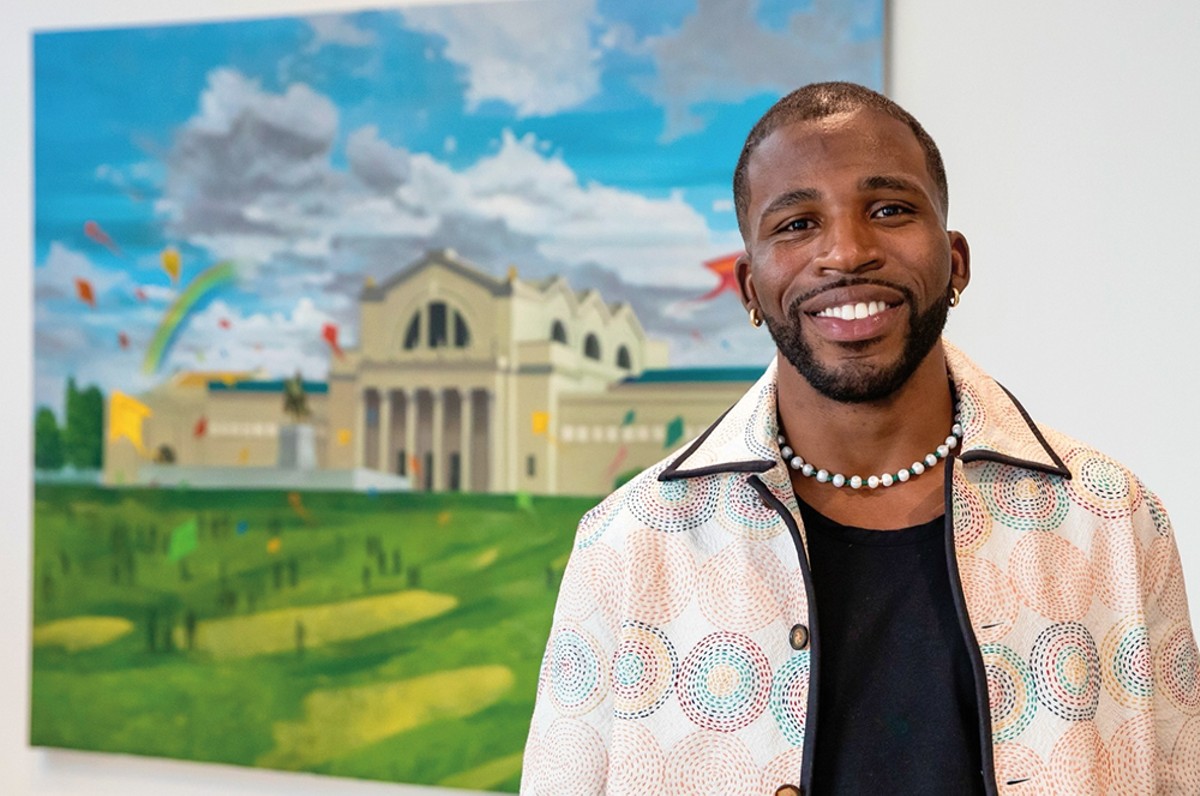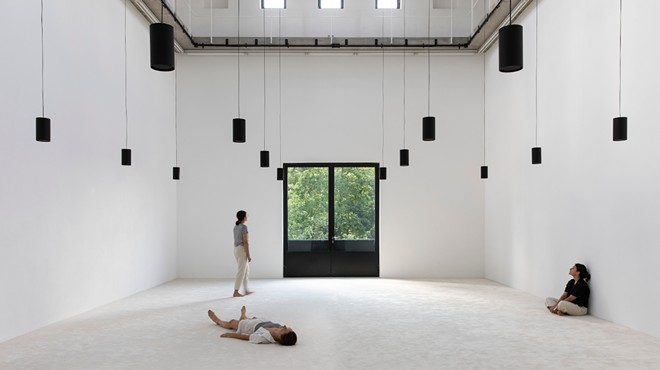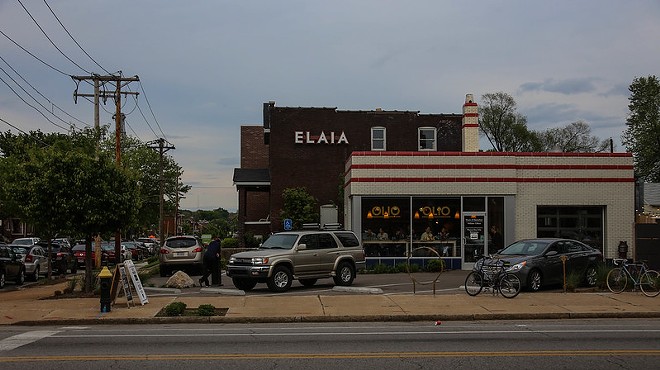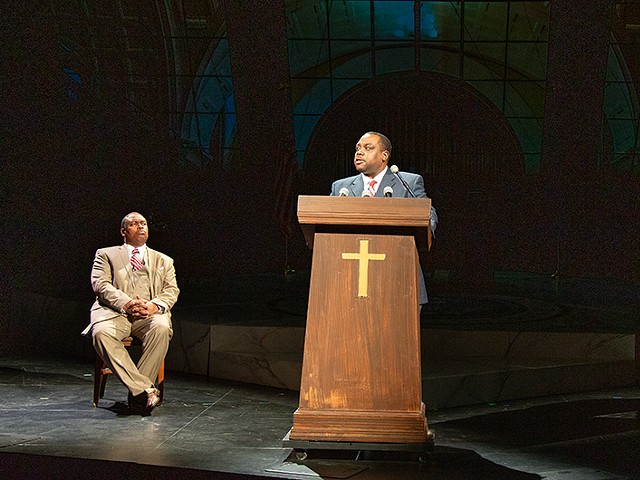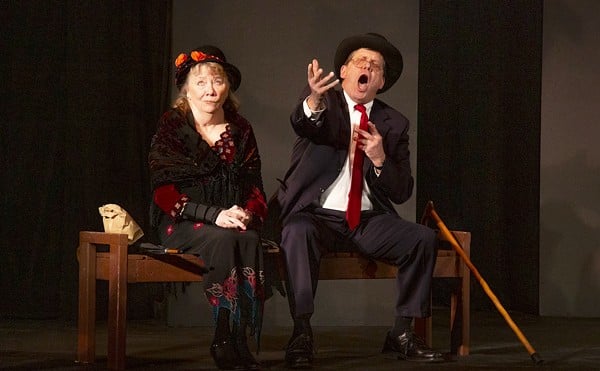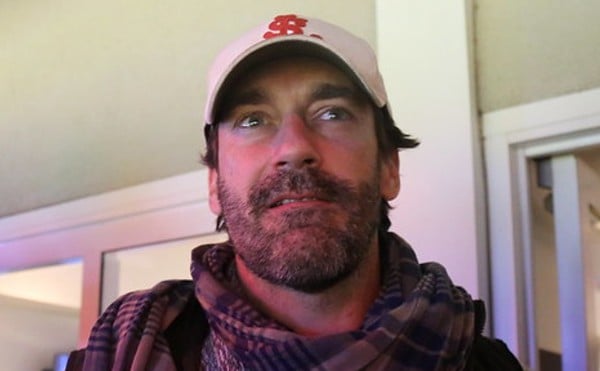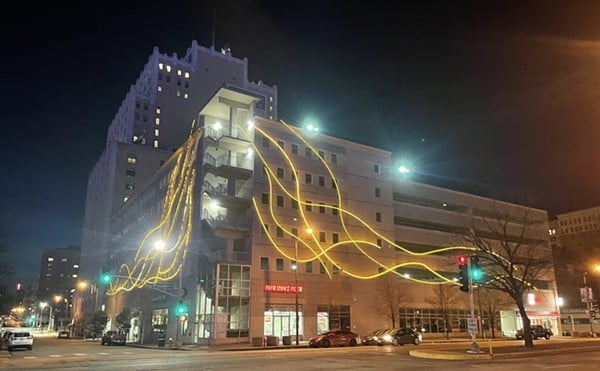Ten years later, Chambers is a Yale MFA graduate whose solo exhibitions have appeared in galleries across the globe, and in 2021, he made Forbes' 30 Under 30 list as one of the most promising artists of his generation. His latest exhibit, Birthplace, is on display at the Contemporary Art Museum St. Louis (3750 Washington Boulevard, camstl.org) through Sunday, February 11. An homage to St. Louis and the spaces that nurtured Chambers' creativity, the exhibition features places important to the artist's development: classrooms, libraries, playgrounds and Art Hill.
Chambers is returning to St. Louis for an artist talk at CAM from 6 to 7 p.m. on Thursday, January 18. In advance of his return, the RFT spoke with the artist by video call about his journey and what it means to come home.
This conversation has been edited for length and clarity.
Is it true Birthplace is the first exhibit your family's been able to see in person since you left St. Louis 10 years ago?
Yeah man, it's very surreal. One of the double-edged swords of being an artist with an aggressive career is that you travel quite a bit, and my entire family is in St. Louis and unfortunately doesn't have the resources to do a lot of traveling. That was oftentimes my experience growing up, too. We were quite poor, like many people in the inner city, especially in the northern part where I'm from.
Then we talk about the Black body's relationship to art museums and galleries that didn't really function as inviting events for my family in a lot of ways. It's hard. I think a lot of Black people, we struggle with, "How do we navigate those spaces? Are we welcome in those spaces?" So being able to bring work home to them meant quite a bit because this would be their first time seeing the paintings outside of Facebook or Instagram.
Has time and distance away changed the way you think about home?
Oh, absolutely. Like with most things in life, time is the greatest teacher of perspective. I've developed a stronger appreciation for St. Louis having been away from it. Ten years was significant for me. The loss of my mother happened in those 10 years. I lost my brother. All of those things bring not only my own mortality into sharper focus, but also make me really proud to be from St. Louis. I feel that if you can survive in St. Louis, you can thrive anywhere. It kind of gives you, just in the cultural fabric of the city, this resilience to endure. That has been my saving grace as I navigated the art world and spaces like Yale.
Looking at your painting Art Hill, I got lost in my own memories there and how they've shaped me. There's a universality to memory that makes Birthplace ripe for projection by the viewer. Is that intentional?
I would say so for sure. Art Hill was born out of a memory in which I was on a field trip to the Saint Louis Art Museum, and on one such day, there were people flying kites. I remember thinking, "Wow, it's so incredible to see these shards of color in the sky outside of this mausoleum for art objects." When I painted that image, it was an attempt to spark the viewer to recall a memory of wonder, to see a museum and recognize it isn't just an architectural structure that houses a particular thing. It's an architectural structure that lives amongst the community of people that live there. The beautiful thing about our Saint Louis Art Museum is that it's housed within Forest Park, this lush landscape of green where you can see extraordinary things or leisurely activities happening all the time. I love that dichotomy and the relationship between the space, community and structures that live there.
How does your love for literature and literary themes and narratives translate into the visual elements of your paintings?
When it comes to a lot of the writers that I appreciate, you know, James Baldwin, W.E.B. Du Bois, Octavia Butler, Zora Neale Hurston, what I found in common with them stems from my love of magical realism, a genre that is an acknowledgement of magic within the rational world. For example, how a Black subject navigates the world and the things we're likely to experience psychologically or physically oftentimes aren't believed or accepted. They'd be like, "Oh, you're just imagining that," but we know we're not imagining that. We understand that there's a distinction between how we're engaging with reality. James Baldwin echoed that sentiment. So that's where the surreal and the uncanny start to twinkle into our everyday experiences. In painting, I think we need to pay attention to this.
When you walk into a bookstore or library, what section do you gravitate toward?
Fiction, easy. In a heartbeat. It's either fiction, essays or poetry. I almost never go to nonfiction. I watch the news enough. I'm depressed enough, and oftentimes, when you're reading someone's memoir, it's some dark shit in there. That is all well and good, but I like those with a whimsical imagination.
The majority of your art portrays Black figures in moments of rest, rejecting the notion that Black bodies must be engaged in labor or resistance to be validated. How does this artistic philosophy manifest in your personal life?
It's one philosophy that I'm constantly negotiating. We are all subjects of capitalism, right? It's important to recognize that as a force that is impacting all of our lives. Black subjects, our bodies are capital, and it's quite useful for building wealth for any number of people, both historically and currently. That being said, I try to recognize the extraordinary privilege it is to be able to live each day and to engage with a life that's full of color. I want to make sure that when I'm caught up in the demands that society imposes on me, I recognize those who have come before me have fought to get me into a space where I can take more time.
How do you define success as an artist?
The ability to be engaged in conversation. You make your work to be in conversation with people. For someone to say, "I feel you on this," or "I find this interesting," and sit down and talk with you about a painting as the medium for that conversation. I hope that never goes away because I think it keeps us all rich.
Birthplace will be open at CAM through Sunday, February 11, and is free to attend. The museum is open 10 a.m. to 5 p.m. Wednesday through Sunday. To register for Chambers' artist talk, visit camstl.org/event/artist-talk-dominic-chambers.
Subscribe to Riverfront Times newsletters. Follow us: Apple News | Google News | NewsBreak | Reddit | Instagram | Facebook | Twitter | Or sign up for our RSS Feed

